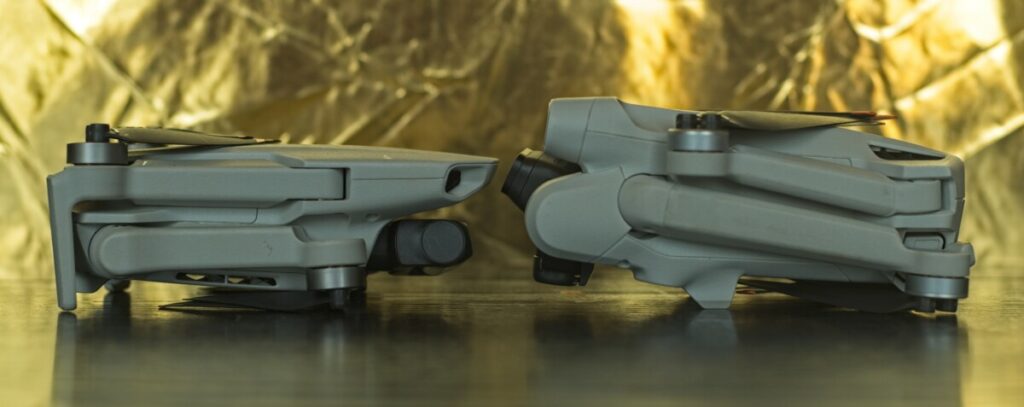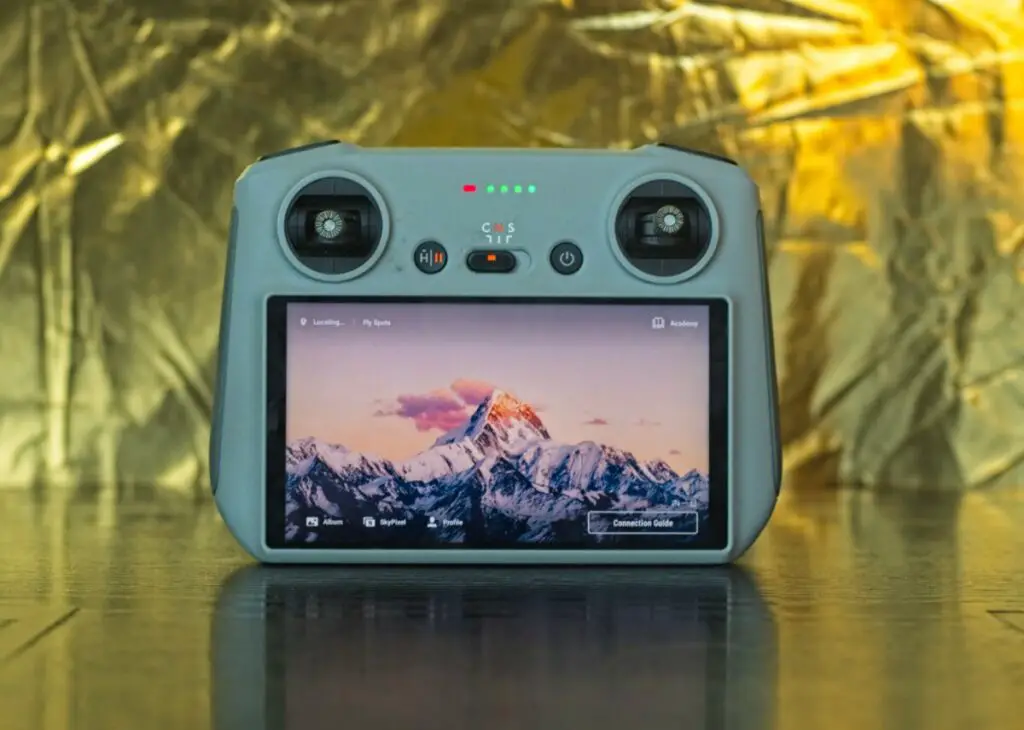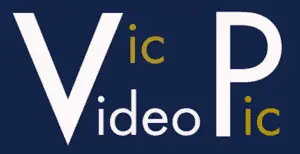- The Mini 2 suits beginners in drone videography and photography. It is basic in functionalities and offers decent video quality, basic photo capabilities, and excellent DJI reliability. The technology is a bit dated and the sensor is very small
- The Mini 3 Pro does a lot of things very well. A big step forward over the Mini 2, also suitable for intermediate users. The ability to shoot vertical video attracts videographers active on social media platforms. It can also interest professional users as a second drone for urban usage, travel, and hiking
They are the two models of the DJI line offering 4k video with a weight below the critical threshold of 250 grams. They are positioned for two different kinds of users. DJI has added the word Pro to the Mini 3 for a reason

Recently DJI has lowered the price of the Mini 3 and added the 48 MP mode. My analysis in the article: Mini 3 vs 3 Pro vs Mini 2, which lightweight drone to buy?
If you prefer to watch this as a video, you will find my YouTube version at the end of this article
Specs
| Mini 3 Pro | Mini 2 | |
| Sensor Size | 1/1.3″ | 1/2.3″ |
| Aperture | f 1.7 | f 2.8 |
| Video Resolution | 4k at 60 fps | 4k at 30 fps |
| Video Bitrate | 150 Mbps | 100 Mbps |
| Photo Resolution | 12 MP (48 MP mode available) | 12 MP |
| Color modes | Normal D Cinelike | Normal |
| Intelligent Modes | Active Track Spotlight Point of Interest Hyperlapse Mastershots Quickshots | Quickshots |
| Obstacle Sensors | Tridimensional | |
| Battery Life | 34 min (47 min + battery) | 31 min |
Main Features
Mini 2
The Mini 2 was released in November 2020 as an upgrade over the original Mini, adding 4k video, RAW photo, zoom functionality, better transmission, and some basic Quickshots, maintaining a similar design
But the design of the first Mini dates from 2019, a very long time ago in terms of drone technology
At the time it was a great achievement to squeeze a decent 4k camera with a three-axis gimbal and performances up to DJI standards in such a small weight. So the Mini 2 had to do without any bells and whistles
The only intelligent mode for footage is Quickshot, while for photography there is a simplified version of Panorama
The sensor is very small for today’s standards and this is not a good omen for dynamic range and low light footage
There are no obstacle sensors and only one color mode, the 8-bit Normal
Mini 3 Pro
The Mini 3 Pro was released in May 2022. DJI has been able to add an astonishing amount of functionalities, while still maintaining a weight below 250 grams
The sensor is much bigger at 0.77”, the fixed aperture of f1.7 is wider than any previous DJI model
The video resolution is 4k with a frequency of up to 60 fps, which is useful for slow-motion
Besides Normal, there is also a flat 10-bit color profile, D Cinelike, suitable for serious post-processing
The new model offers tridimensional obstacle sensors at the front, back, and bottom
The ability to detect obstacles is a crucial element of safety, even though the Mini 3 lacks sensors on the sides and above, therefore I don’t suggest using it for close-range tracking
Another important feature of the Mini 3 compared to the Mini 2 is Focus Track, the name given to the three intelligent flight modes:
- Spotlight
- Active Track
- Point of Interest
These modes offer tracking capabilities and are useful to smoothly perform complex cinematic moves that would be very difficult to accomplish manually
More detail on these modes in my specific articles: Active Track, Spotlight, Point of Interest
The big novelty of the Mini 3 is the ability to shoot vertical video and photos and this is an important selling point, as it makes this model the perfect tool for users active on social media platforms
Other extra functionalities of the Mini 3 compared to the Mini 2 are a well-implemented Hyperlapse mode, MasterShots, and a more complete version of panorama photography
In Flight
Here is a comparison of the noise level of the two models, taken from the same distance with the same microphone. The mini 3 Pro is very quiet, and this is useful to avoid attracting unwanted attention
The announced horizontal speed is the same in the two models and there is little difference in wind resistance, but the Mini 3 certainly feels more powerful and agile
Like other previous models of the DJI line, the Mini 2 has at times some very annoying jumps of the camera at the beginning or the end of a move, while the Mini 3 is always perfectly stable thanks to the different design of the fuselage and of the area around the gimbal
I have tested the battery life of the Mini 2 in normal flying conditions at 27 minutes, while with the Mini 3 Pro, I reached over 30 minutes
I shoot a lot of hyperlapses and the extra life of the battery is crucial for this technique
With the Mini 3 Pro, it is also possible to purchase a special battery lasting well over 40 minutes, but sadly it is not available in Europe

The Mini 3 can be purchased with the new RC controller with a built-in screen. I got used to it and it is a joy to use it
No other device like a smartphone or tablet is needed, and no cables to attach. Just switch it on and in a few seconds, we are ready to go
For more details please refer to my specific article about the RC controller
Footage Quality
When the Mini 2 was released I was pleasantly surprised by the video quality but there is a serious degradation when shooting against the sun and in low-light situations due to the tiny sensor and the basic lens
Night footage with the Mini 2 is a bit embarrassing by today’s standards
The Mini 3 has a second color profile, a flatter one, D Cinelike
A flatter profile should perform better in high dynamic situations and should be able to stand much heavier post-processing
It is therefore useful to adapt footage to the color scheme and the mood of a specific project
More details about Video quality with the Mini 3 and 3 Pro in my specific article
Mini 3 Pro vs Mini 2: Photo Quality
I always found the Mini 2 better for footage than for photos
Still images are noisy for today’s standards, the ungraded RAW files have a noticeable amount of haze, the colors are nothing to write home about and the files don’t respond very well to color grading
In shots toward the sun better results are obtained by merging to HDR bracketed photos. In low light, the quality falls off a cliff
Photos with the Mini 3 Pro are good in all light conditions, the RAW files are very solid, the quality of the lens is much higher, and the colors are pleasant even though they lean slightly towards a warmish tobacco tint
I find that the best result is obtained by lowering the white balance value to 5000 Kelvins instead of the usual 5600
More details on my specific article about Photography with the Mini 3 Pro
The Mini 3 Pro shines particularly in low light, thanks to the bigger sensor and the wide aperture of the lens
The detail in elements far away is a weak point, probably due to the wide lens
The Mini 3 Pro has also a mode named 48MP
It adds a touch of extra detail over the normal mode in easy light conditions. It is obtained by splitting each of the 12m pixels into 4 smaller ones and should not be confused with a real 48MP resolution
